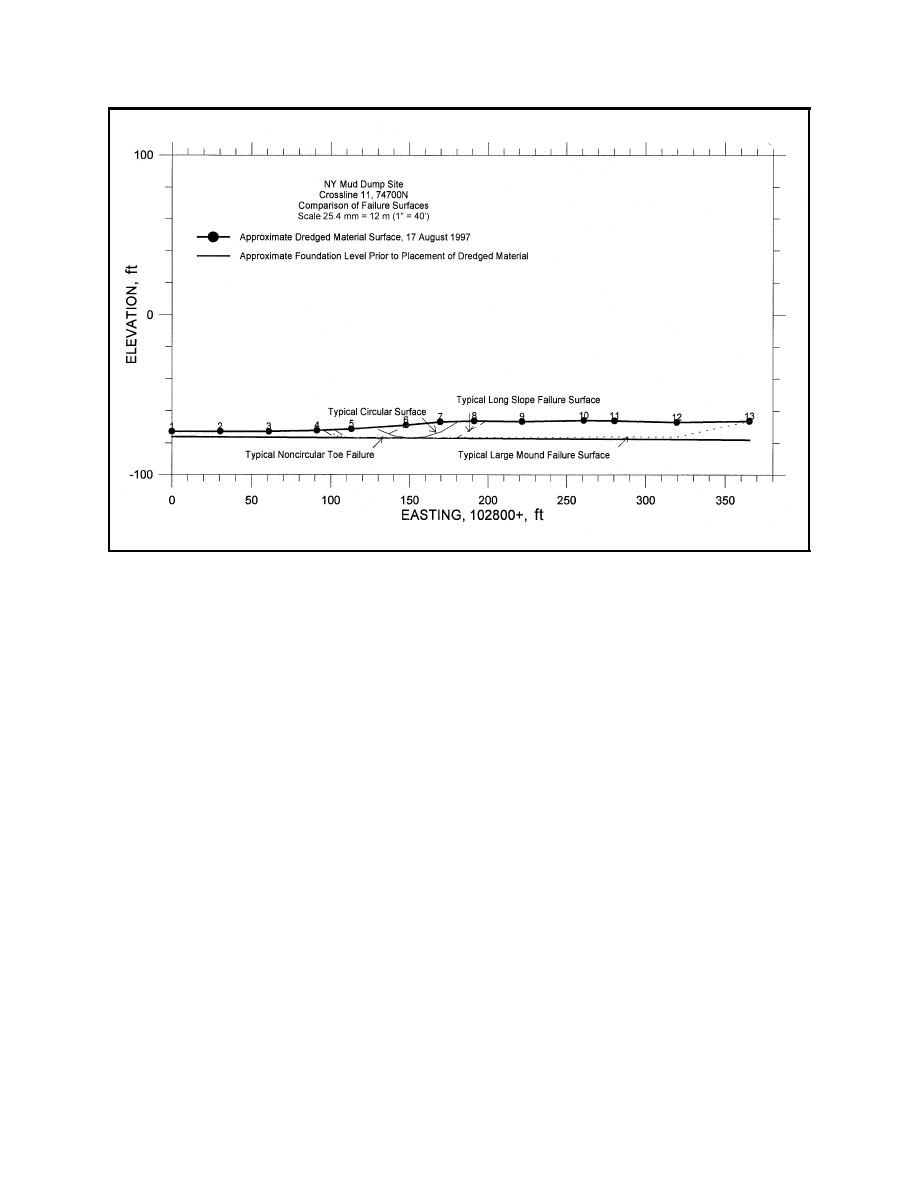 |
||
|
|
||
|
Page Title:
Figure 2. Example criterial failure surfaces for different modes of failure |
||
| |||||||||||||||
|
|
 ERDC TN-DOER-N5
July 2000
Figure 2. Example criterial failure surfaces for different modes of failure (to convert feet to meters,
multiply by 0.3048)
failure modes that has the lowest factor of safety against sliding. The computer program UTEXAS3
searches for the critical surface that gives the lowest factor of safety on a grid that moves the
postulated failure shape up and down the slope. By using different starting failure shapes and
different grid densities, the user can examine a large range of possible failures and identify the ones
with the smallest factor of safety.
The sand cap is usually assumed to be applied instantaneously and uniformly for the analysis.
Realistically, this is impossible. The best stability will be achieved if the sand is placed at the toe
of the slope and then worked up toward the crest of the slope. Achieving this controlled placement
is problematic under actual disposal conditions, and if sand is placed toward the crest of the slope
before the lower portions of the slope are covered, the factor of safety against sliding will generally
be reduced.
Critical failure surfaces with the lowest factor of safety should be located for each mode of slope
failure. These values of factor of safety should be compared; the failure surface with the lowest
factor of safety will be the most likely to fail. Limit equilibrium analysis of this type determines
only if a configuration is stable or unstable. It does not predict postsliding configuration or behavior.
Once a slide occurs, the uphill scarp may be quite steep and subject to further progressive slips.
14
|
|
Privacy Statement - Press Release - Copyright Information. - Contact Us - Support Integrated Publishing |